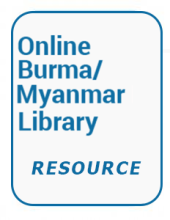Land Library Search
Through our robust search engine, you can search for any item of the over 73,000 highly curated resources in the Land Library.
If you would like to find an overview of what is possible, feel free to peruse the Search Guide.
/ library resources
Showing items 1 through 9 of 197.This summary assesses the gaps in the provision;understanding and implementation of laws/articles and their impact on women and VGs with respect to land use rights and provides a strategy to overcome these legal constraints that affect women and VGs land rights security..This resource was publish
This strategy assesses the gaps in the provision;understanding and implementation of laws/articles and their impact on women and vulnerable groups (VGs) with respect to land use rights and provides a strategy to overcome these legal constraints that affect women and VGs land rights security..This
This case study assesses how a new agricultural loan product is helping smallholder farmers to access loans by using their land use right as a guarantee..This resource was published in the frame of the Land Investment for Transformation (LIFT) Programme.
This study examines the reasons why landholders choose to formally or informally transact land use rights and provides recommendations on how to increase the number of households formally registering transactions..This resource was published in the frame of the Land Investment for Transformation
Yesterday, 21 September 2017, at the United Nations General Assembly, Sheikh Hasina, Prime Minister of Bangladesh, stated, “We are horrified to see that the Myanmar authorities are laying landmines along their stretch of the border to prevent the Rohingya from returning to Myanmar.
...Some of the current wave of refugees have stepped on landmines during their attempts to leave Myanmar.
XVI Biennial Conference of the IASC, Utrecht July 2017
Track 8: What Role can the Commons play in the Struggle for Land Rights, in particular of
In 2004, Ngwe Yi Pale Company began coal mining in Nam Ma tract of Hsipaw township. The mining has destroyed farmlands and irrigation sources, and caused water and air pollution, mi-pacing over 3,000 people.
Conclusions: "Amnesty International’s latest research shows that hundreds of people close to the giant Letpadaung mine continue to face the risk of forced eviction from their farmland, and in the case of four villages, from their homes as well.


